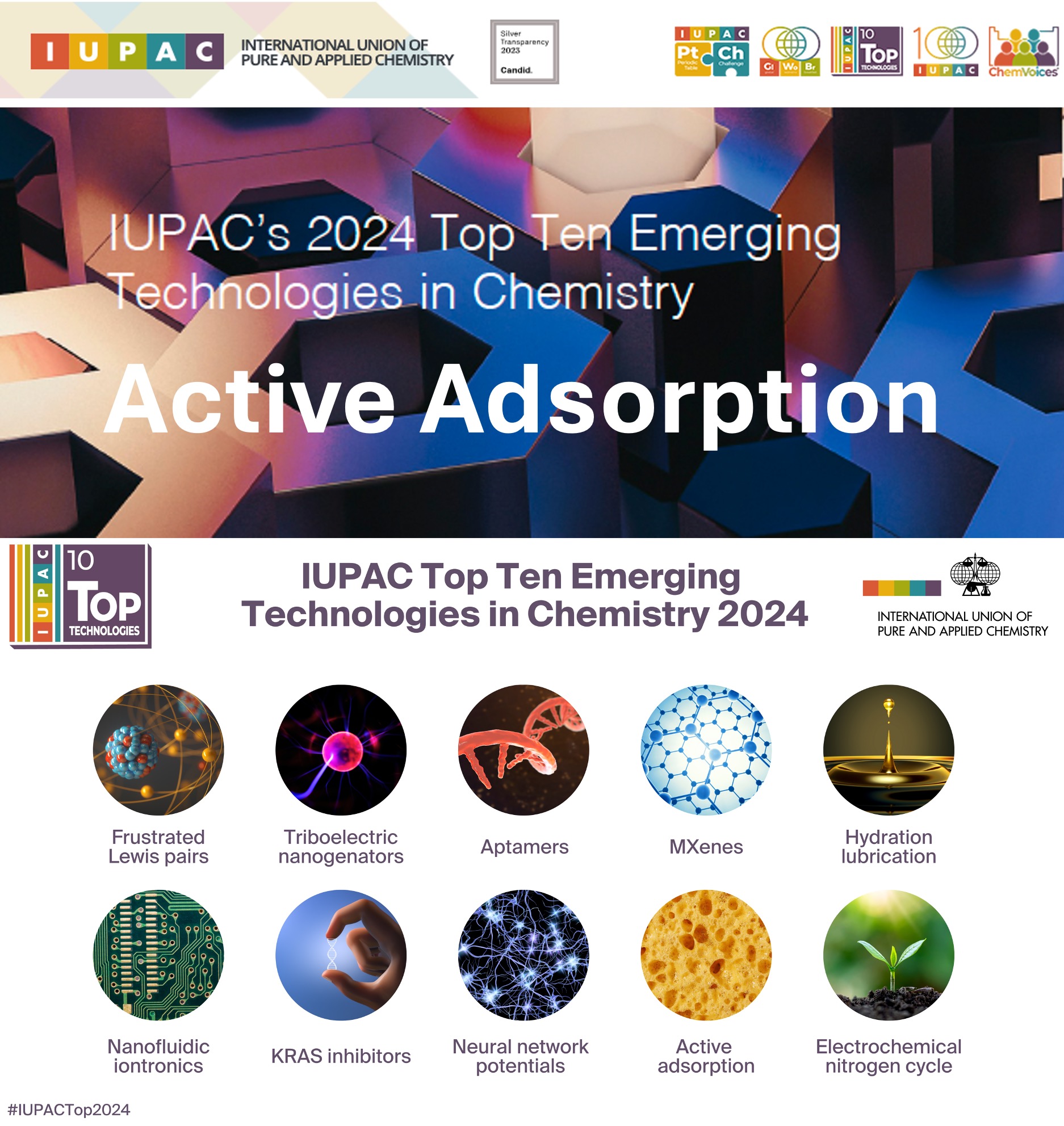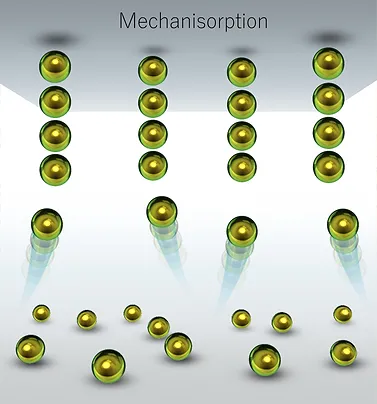October 18, 2024

Published in Science, Feng's discovery of the first fundamentally new mode of adsorption since the 1930s, active adsorption, has made a significant and lasting impact in the field. Recently, the International Union of Pure and Applied Chemistry (IUPAC) recognized mechanisorption as one of the 2024 Top Ten Emerging Technologies in Chemistry, highlighting this pioneering research as increasingly influential (Gomollón-Bel, Fernando. "IUPAC’s 2024 Top Ten Emerging Technologies in Chemistry" Chemistry International, vol. 46, no. 4, 2024, pp. 8-16. https://doi.org/10.1515/ci-2024-0403). "Mechanisorption could create new methodologies for manipulating molecules in a controlled manner—potentially a true game-changer," remarked Fernando Gomollón-Bel.

Founded in 1919, IUPAC is a globally respected organization that fosters international collaboration and promotes the advancement of chemistry education and research. Its standardization of chemical nomenclature, terminology, and measurements is universally adopted by chemists worldwide. In 2019, to commemorate IUPAC’s 100th anniversary, the Top Ten Emerging Technologies in Chemistry initiative was introduced. An international panel of experts from various fields of chemistry forms the jury, which reviews and selects transformative innovations from a global pool of nominations. These technologies, positioned between discovery and full commercialization, are chosen for their potential to revolutionize chemistry, sustainability, and beyond.
Over the past century, adsorption research has primarily focused on equilibrium systems, studying physisorption and chemisorption. Recently, we discovered a fundamentally new mode of adsorption—mechanisorption—which forms mechanical bonds between adsorbents and adsorbates through non-equilibrium pumping. This discovery marks the first significant advancement in the fundamentals of adsorption since the 1930s. Mechanisorption resembles the active transport mechanisms in living organisms that control ion movement across membranes. Adsorbates are transported from the bulk to the interface, creating a vast chemical potential gradient and storing energy in a metastable state. We have achieved electrochemically-driven automated synthesis of these non-equilibrium materials.

This breakthrough extends the potential of adsorption phenomena and provides a transformative approach to controlling chemistry at surfaces and interfaces. By leveraging active adsorption mechanisms and materials, mechanisorption offers a promising solution for effective decarbonization, which can significantly contribute to addressing the climate and sustainability challenges we face today.
Further reading:
Feng, L.; Qiu, Y.; Guo, Q.-H.; Chen, Z.; Seale, J.; He, K.; Wu, H.; Feng, Y.; Farha, O. K.; Astumian, R. D.; Stoddart, J. F., Science 2021,374, 1215–1221. DOI: 10.1126/science.abk1391.
Tiny labmade motors could one day suck pollutants from the air and harvest precious metals, News / Science
When push comes to shove, News & Views / Nature Chemistry
A Molecular Pump Facilitates Mechanical Adsorption Away from Equilibrium, Highlight / Angew. Chem. Int. Ed.
Mechanisorption mimics biomolecular machinery, Chemical & Engineering News
Chemists develop a fundamentally new mode of adsorption, Phys.org
First fundamentally new form of adsorption for more than 90 years driven by molecular machines, Chemistry World
Chemists create new mode of adsorption, Engineering 360
Chemists develop a fundamentally new mode of adsorption, Northwestern Now
A Fundamentally New Mode of Adsorption Makes its Debut, NU Chemistry Newsletters
Image